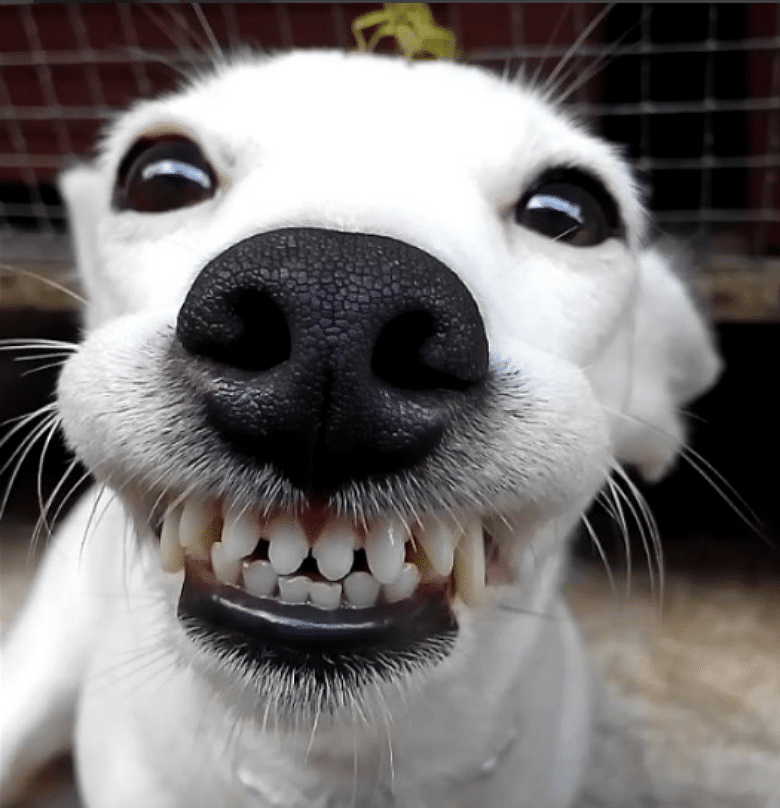Brushing Up on Dental Health
Help your puppy stay healthy by keeping his teeth in tip-top shape.
Taking care of your puppy’s teeth is a vital part of keeping it healthy. According to the American Veterinary Dental Society, 80 percent of dogs will begin to show signs of oral disease by 3 years of age. Without proper dental care, your puppy’s teeth will begin to accumulate bacteria, plaque and tartar, which can lead to bad breath and periodontal disease (gum disease).
This bacteria buildup can even affect your dog’s overall health as the bacteria enters the bloodstream and taxes the heart, liver and kidneys. Your puppy can’t brush his own teeth (wouldn’t that be nice?) or tell you if his mouth is hurting, so it’s up to you to maintain your puppy’s dental health.
Your new puppy should have arrived with all the standard-issue parts and pieces, including 28 milk teeth. They’re small, they’re white, they’re sharp, and just as cute as they can be, but don’t expect to admire them for long. By about 8 months of age your puppy’s pearlies will have fallen out and been replaced by 42 full-sized fangs. (Puppy teeth usually come in at 4 weeks and start falling out around 3 or 4 months of age, but this varies by breed and individual pup.)
While they last, though, these temporary, or deciduous teeth, will require some attention. Puppy teeth are easily broken, which frequently leads to infection, so you’ll need to check for this. It’s also important to get your puppy comfortable with having his mouth examined, in order to catch potential problems early and establish good dental habits from the start.
Value of Toothcare
The specialty field of veterinary dentistry has only existed since 1989. Before that, the rule was, if the teeth are bad, pull ‘em out. If not, leave ‘em alone. Veterinary medicine has come a long way since 1989, but there is still much room for improvement.
Because veterinary dentistry is relatively new, a lot of owners aren’t aware of the benefits of dental care. “Lack of education is a big problem,” says Clarence Sitzman, D.V.M., president of the American Veterinary Dental Society, and owner of the Front Range Veterinary Clinic in Colorado.
“Periodontal disease is the most commonly diagnosed disease for dogs and cats. It’s also the most neglected.” (Gum disease is caused by plaque buildup in pockets between the teeth, which decreases the gum’s ability to support the tooth and is often accompanied by pain, bleeding and eventual tooth loss.)
Best Way to Brush
“It’s important to get your puppy used to having his teeth brushed, and the earlier the better,” says Brook Niemiec, D.V.M., Dipl. AVDC, a veterinary dentist at Southern California Veterinary Dental Specialties, California.
“Clients bring in their 8-year-old dogs whose teeth are falling out, and ask, ‘What can I do?’ When I hand them a toothbrush, they laugh and say, ‘No way will my dog allow me to do that!’ They’re probably right. But if they’d started brushing when their dogs were puppies, they wouldn’t be having problems now.”
Daily brushing is best, but at the least, clean your puppy’s teeth two or three times a week. In the early stages, it’s ok to simply rub the teeth with a soft cloth, gauze or a child’s toothbrush.
When nearly all the adult teeth have appeared, all the teeth should receive a regular brushing with canine toothpaste and a doggie toothbrush or fingertip brush. Never use human toothpaste or baking soda when brushing your puppy’s teeth.
These products are not meant to be swallowed and could cause your pup to become sick. Instead, use a toothpaste designed for dogs, which is safe and tastes good to your dog.
“You can start brushing when puppies are 2 to 3 months old,” Niemiec says. “Make the experience positive. Start with just handling the outside of the mouth briefly.
Then, get your fingers in the mouth, and even try to open it. Finally, introduce the brush. Link this behavior to positive things, such as walks and playtime, and especially food. This can either be dinner or a favorite treat. I brush my dog’s teeth right before dinner, and she gets excited to see the toothbrush.”
Ira Luskin, D.V.M., practices at the Animal Dental Center in Maryland. He also recommends playing with puppies’ mouths several times a day, and including gum massage as part of the routine. Gum massage helps pups grow accustomed to having their mouths handled. “When you’re finished, give your puppy a treat,” Luskin advises.
Niemiec recommends brushing your pup’s teeth in a circular motion, holding the brush at a 45-degree angle to the gumline. Use a small amount of doggie toothpaste, and replenish it often. “Brush all of your pet’s teeth in succession,” Niemiec says.
“Open his mouth slightly by placing a finger between the jaws in the area just behind the upper canine tooth. The insides of the teeth are a little bit trickier. Many dogs won’t accept brushing in this area. Most periodontal disease occurs on the outside surfaces of the teeth, though, so if you can’t reach the inside areas, it’s ok.”
For some reason, though, the inside surfaces of the upper canines in small-breed dogs, especially Dachshunds, Yorkshire Terriers, Maltese and Poodles, are susceptible and can develop very bad periodontal disease in this area. “Brushing once a day would be ideal,”
Niemiec says, explaining that even brushing your pet’s teeth once a week significantly reduces and prevents plaque buildup. “Brushing greatly improves periodontal health, but it does not completely eliminate the need for professional cleanings.”
Although your puppy won’t need to have his teeth professionally cleaned, many adult dogs require frequent veterinary scalings—some more often than others, depending on the level of dental care the dog receives at home.




